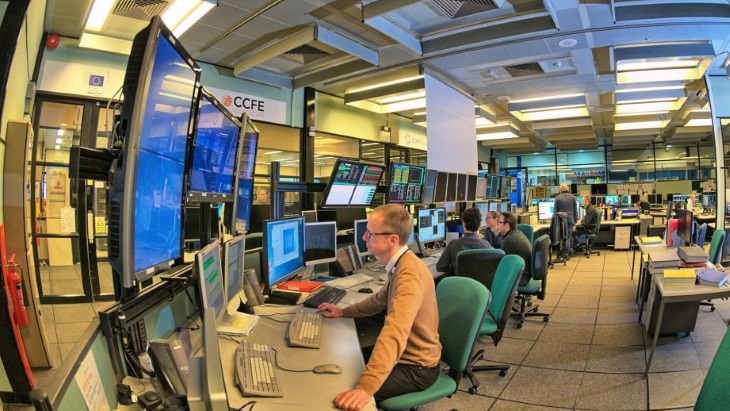JET is operated by the UK Atomic Energy Authority at Culham Centre for Fusion Energy (CCFE), near Oxford in England. Scientists from 28 European countries use it to conduct research into the potential for carbon-free fusion energy in the future through work coordinated by the EUROfusion consortium which manages and funds European fusion research activities on behalf of Euratom. JET is undergoing a series of tests that will inform operations at the new international experimental fusion reactor, Iter, which is under construction in southern France.
In machines like JET, which use the tokamak reactor concept, an exhaust system known as the 'divertor' removes both the extreme heat and impurity particles from the hot plasma fuel. One of the problems with scaling up JET to a larger machine like Iter is that the latter’s divertor components will not be able to take extreme levels of exhausted heat as they will damage the divertor.
CCFE said that one solution to this problem is to use a gas as an impurity (often nitrogen) to cool down the plasma by radiating the heat over a wider surface area within the divertor region, but nitrogen can break down into additional compounds - leading to tritiated ammonia - and this is not compatible with JET's processing systems.
The alternative is to use neon, but previously the level of heating power available on JET has meant this has not been able to achieve the same effects as nitrogen without affecting how well the plasma is confined in the tokamak; a key factor in fusion reactor performance. However, taking advantage of increased heating power and additional neon being injected into the plasma, scientists have found the effects are just as good.
Carine Giroud, who coordinated the experiment, said the discovery that neon could be used to radiate and improve the pedestal is significant.
"We had extra power from JET's neutral beam heating system which allowed us to put in more neon, and it was both these elements which led to the improvement. We haven't yet achieved our target for reducing power to the divertor tile at the outer strike point, but we have seen that the temperature of the divertor tile didn’t increase significantly during the time where the radiation from the neon was applied. This was something we could do with nitrogen in previous years but not with neon - but now we can."






_53514_33880.jpg)







